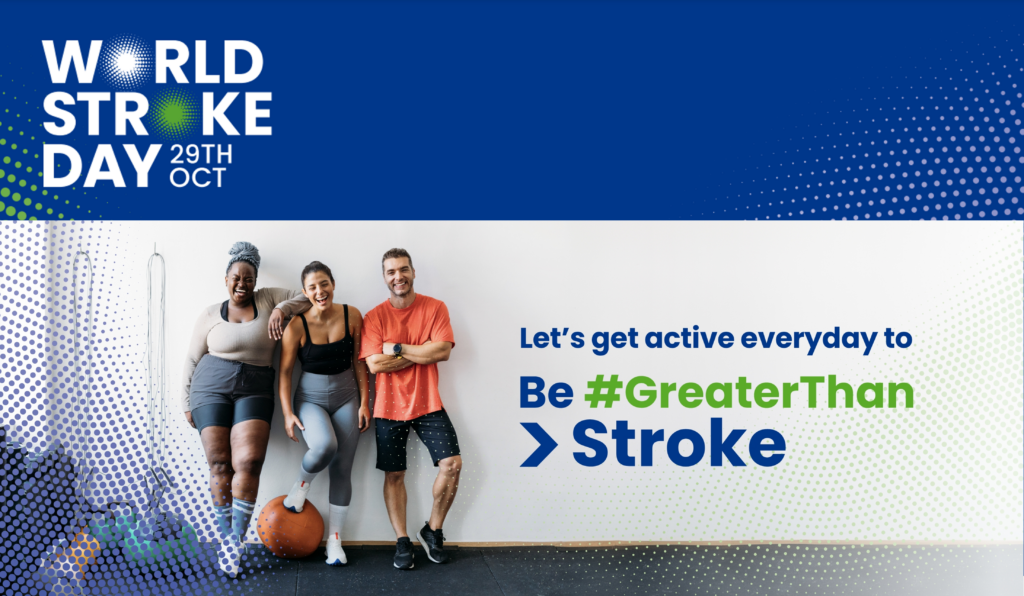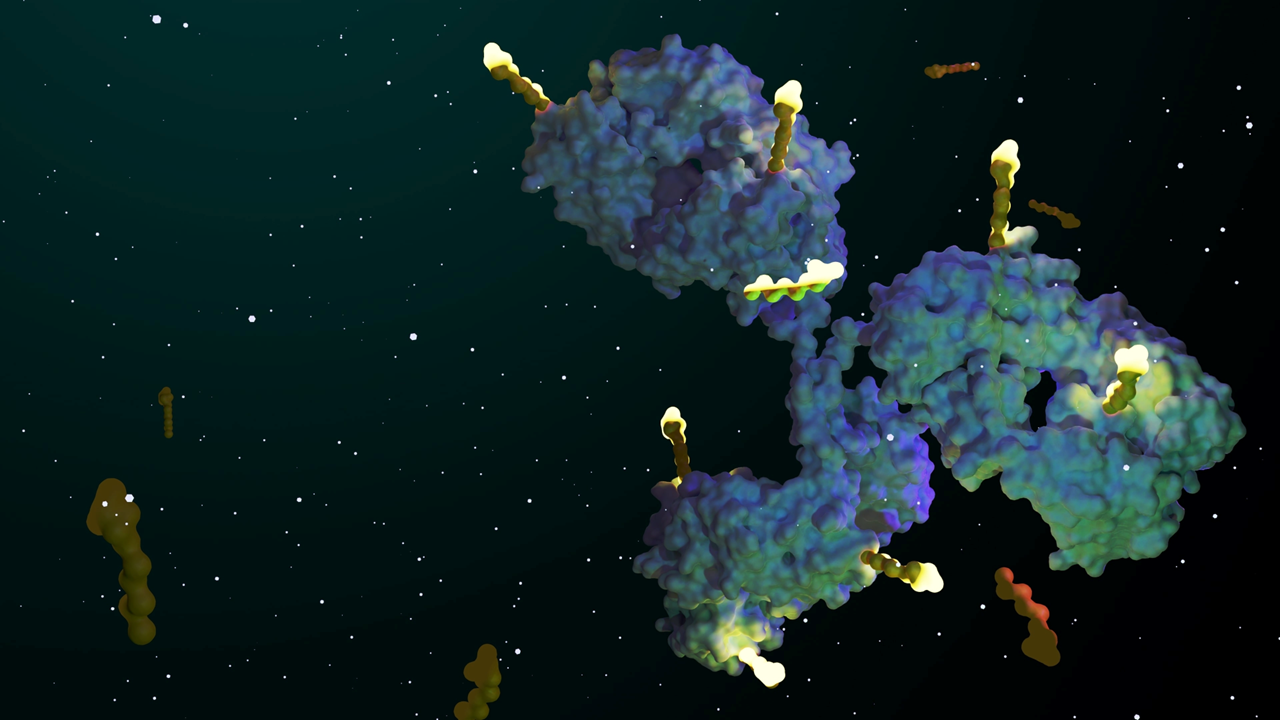Every year on October 29, people around the globe come together to observe World Stroke Day, an event dedicated to raising awareness about stroke, its prevention and the impact it has on millions of lives.
This annual observance is an opportunity to highlight the importance of recognizing stroke symptoms, understanding risk factors and taking steps to reduce your risk. Many strokes can be prevented and treated if action is taken early.
Stroke is one of the leading causes of death and disability worldwide. Each year, approximately 12.2 million people experience a stroke globally. It is estimated that one in four adults over the age of 25 will have a stroke during their lifetime.
In the US, around 795,000 people suffer a stroke every year. Of these, around 610,000 are first-time strokes, while 185,000 are recurrent strokes.
World Stroke Day 2024: The Greater Than Challenge
The theme of World Stroke Day 2024 is “Be #GreaterThan Stroke,” which encourages people to take steps to become physically and mentally active to help reduce their risk of stroke.
As part of this year’s theme, worldstrokeday.org has launched the “Greater Than Challenge,” which calls on people “to be greater than yesterday, greater than the expectations others set for us and greater than the sum of our parts, greater than stroke.”
These messages are relayed in a video, which shows people engaged in various types of physical activity, including sports, jogging and walking.
The video encourages people to take on the “Greater Than Challenge,” which involves taking small or big steps to become active every day and in any way to “care for body and mind, and to build community.”
The video explains how individuals and groups can register their activities on the campaign’s website, encouraging people to “spread the word to get friends and families involved, so together we can all be greater than stroke.”
What Is a Stroke?
A stroke occurs when the blood supply to part of the brain is interrupted or reduced, preventing brain tissue from getting the oxygen and nutrients it needs. There are two main types of strokes:
- Ischemic stroke: Caused by a blockage in an artery leading to the brain, often due to blood clots or narrowing of the arteries. About 85 percent of strokes are ischemic.
- Hemorrhagic stroke: Caused by a burst or leaking blood vessel in the brain, which leads to bleeding in or around the brain. An estimated 15 percent of strokes are hemorrhagic.
Both types of stroke are medical emergencies that require immediate attention. The longer a stroke goes untreated, the greater the chance of brain damage and disability.
Stroke is more common in older adults, with nearly 75 percent of strokes occurring in people aged 65 and older. However, strokes among younger adults are becoming more common due to increasing rates of obesity, diabetes and other risk factors.
Recognizing the Symptoms of Stroke: The FAST Method
One of the key messages of World Stroke Day is to recognize the symptoms of a stroke quickly, as prompt treatment can save lives and improve recovery outcomes. The FAST method is a simple way to remember the most common signs of a stroke:
- Face: Check to see if one side of the face is drooping or numb. Ask the person to smile to check for unevenness.
- Arms: One arm may be weak or numb. Ask the person to raise both arms and check to see if one arm drifts downward.
- Speech: Speech may be slurred or difficult to understand. Ask the person to repeat a simple sentence.
- Time: If you observe any of these symptoms, call emergency services immediately. Time is critical in treating a stroke.
Effects of Stroke
The aftereffects of a stroke can vary significantly, ranging from physical impairments like paralysis, weakness or difficulty walking to communication challenges such as aphasia and slurred speech.
Cognitive impairments, including memory loss and difficulties with problem-solving, are also common. Sensory impairments such as numbness, tingling or pain, bladder or bowel problems and sexual dysfunction may also arise.
Emotional and behavioral changes, such as depression, anxiety and personality shifts, often occur, as do issues with fatigue, vision and swallowing.
Stroke recovery is a complex, long-term process involving rehabilitation therapies that aim to improve physical, cognitive and emotional function, but many survivors face lasting challenges depending on the severity and location of the stroke.
Stroke Risk Factors and Prevention
It is estimated that up to 80 percent of strokes are preventable with the right lifestyle changes and medical interventions. Some of the most common risk factors for stroke include:
- High blood pressure: The leading cause of stroke, which can be controlled with medication and lifestyle changes.
- Smoking: Smoking significantly increases the risk of stroke, but quitting can reduce that risk.
- Diabetes: Proper management of blood sugar levels is critical to reducing stroke risk in people with diabetes.
- Obesity: Maintaining a healthy weight through diet and exercise can lower stroke risk.
- High cholesterol: Controlling cholesterol levels can help prevent the buildup of fatty deposits in blood vessels, reducing the chance of an ischemic stroke.
Regular checkups and lifestyle modifications can go a long way in lowering your stroke risk. Maintaining a heart-healthy diet, staying active, reducing alcohol intake and managing stress are also essential steps in preventing stroke.
World Stroke Day 2024: How You Can Get Involved
There are various ways to participate in World Stroke Day 2024, including partaking in this year’s “Be Greater Than Stroke” campaign and taking on the challenge to help support stroke awareness and lower the risk factors of stroke. Other things you can do include:
- Educate yourself and others: Share information about stroke prevention and symptoms on social media or with friends and family.
- Support stroke charities: Consider donating to or volunteering with organizations dedicated to stroke research, prevention and survivor support.
- Join or organize local events: Many communities host walks, runs and other events to raise awareness and funds for stroke prevention efforts.
- Advocate for healthcare access: Support policies that improve access to stroke care, especially in underserved communities.
World Stroke Day is a reminder that stroke can happen to anyone, but with greater awareness, many of its devastating effects can be prevented.
By learning the warning signs, managing your health and supporting stroke survivors, you can make a difference in the fight against stroke.
If you want your company to be featured on Xtalks.com, please email [email protected].












Join or login to leave a comment
JOIN LOGIN